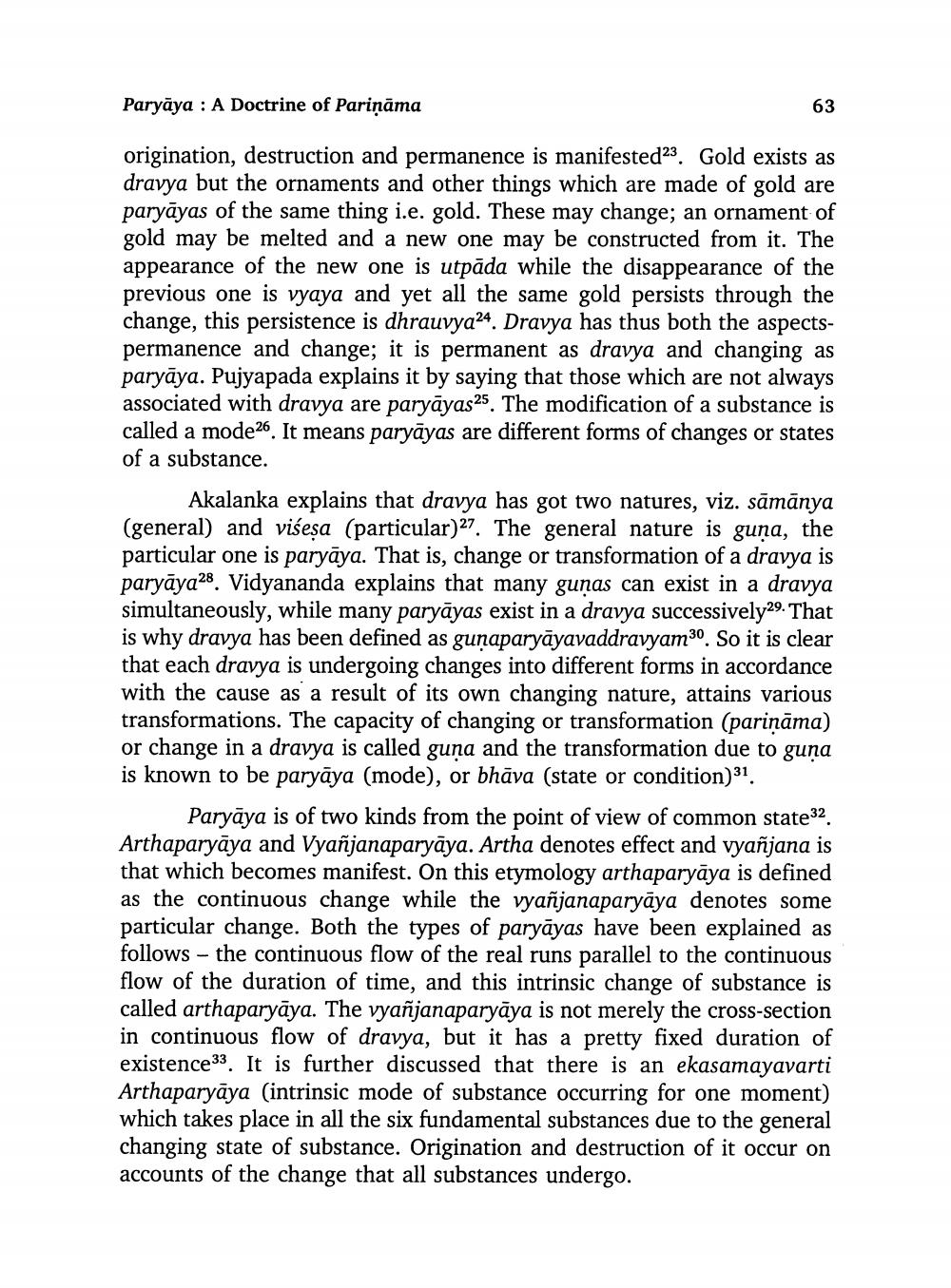________________ Paryaya : A Doctrine of Parinama 63 origination, destruction and permanence is manifested23. Gold exists as dravya but the ornaments and other things which are made of gold are paryayas of the same thing i.e. gold. These may change; an ornament of gold may be melted and a new one may be constructed from it. The appearance of the new one is utpada while the disappearance of the previous one is vyaya and yet all the same gold persists through the change, this persistence is dhrauvya24. Dravya has thus both the aspectspermanence and change; it is permanent as dravya and changing as paryaya. Pujyapada explains it by saying that those which are not always associated with dravya are paryayas25. The modification of a substance is called a mode26. It means paryayas are different forms of changes or states of a substance. Akalanka explains that dravya has got two natures, viz. samanya (general) and visesa (particular)27. The general nature is guna, the particular one is paryaya. That is, change or transformation of a dravya is paryaya28. Vidyananda explains that many gunas can exist in a dravya simultaneously, while many paryayas exist in a dravya successively29. That is why dravya has been defined as gunaparyayavaddravyam30. So it is clear that each dravya is undergoing changes into different forms in accordance with the cause as a result of its own changing nature, attains various transformations. The capacity of changing or transformation (parinama) or change in a dravya is called guna and the transformation due to guna is known to be paryaya (mode), or bhava (state or condition)31. Paryaya is of two kinds from the point of view of common state32. Arthaparyaya and Vyanjanaparyaya. Artha denotes effect and vyanjana is that which becomes manifest. On this etymology arthaparyaya is defined as the continuous change while the vyanjanaparyaya denotes some particular change. Both the types of paryayas have been explained as follows - the continuous flow of the real runs parallel to the continuous flow of the duration of time, and this intrinsic change of substance is called arthaparyaya. The vyanjanaparyaya is not merely the cross-section in continuous flow of dravya, but it has a pretty fixed duration of existence33. It is further discussed that there is an ekasamayavarti Arthaparyaya (intrinsic mode of substance occurring for one moment) which takes place in all the six fundamental substances due to the general changing state of substance. Origination and destruction of it occur on accounts of the change that all substances undergo.




